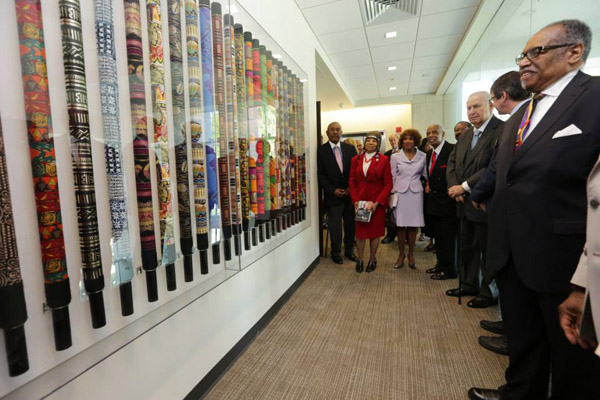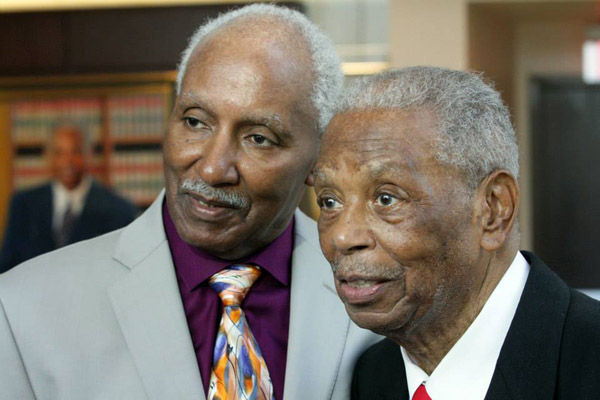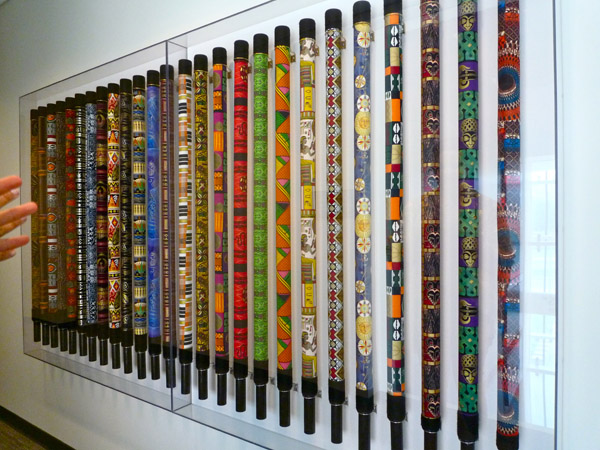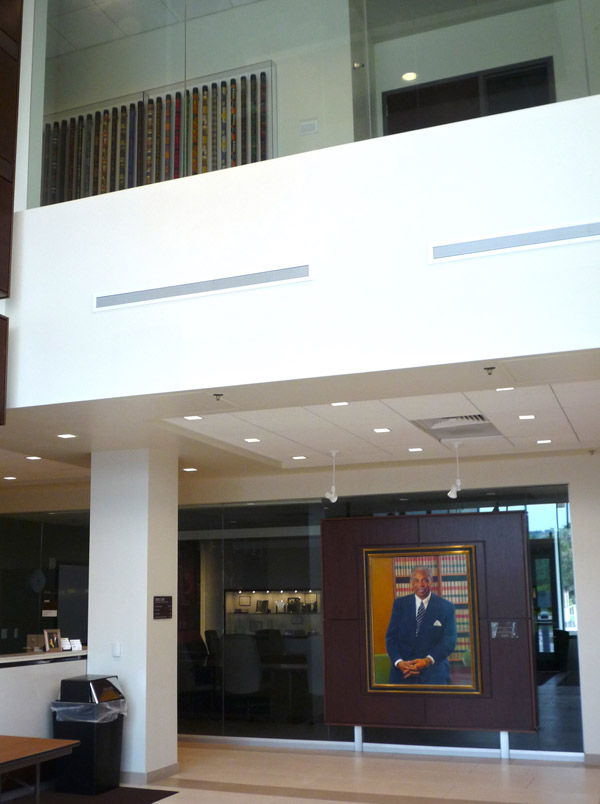
“A Garland of Praise Songs for Rosa Parks” pairs artistic inspiration with civil activism
The crowd at the opening ceremony and unveiling of the piece in its new location. Photo courtesy of the Wayne State University School of Law
Last Tuesday, June 3rd was the opening and dedication ceremony for “A Garland of Praise Songs for Rosa Parks,” an installation piece made in 2009 by artist Lester Johnson, and a new piece of the permanent collection at the Damon J. Keith Center for Civil Rights at the Wayne State University Law School. The ceremony included a speech by Judge Damon J. Keith, who had a longstanding relationship with Rosa Parks, following her relocation to Detroit in the wake of the historic act of resistance that triggered the Montgomery Bus Strike. When Rosa Parks received the NAACP Spingam Medal in 1979, Judge Keith was her choice to act as presenter.

Artist Lester Johnson (left) and Damon J. Keith (right) at the opening ceremony. Photo courtesy of the Wayne State University School of Law
Mr. Johnson also spoke at the opening, highlighting a variety of contributing artisans that helped shaped the piece, and was kind enough to share some words with me about the making and meaning of this important work.
RS: What drew you to Rosa Parks for inspiration?
LJ: The courage of Rosa Parks is the inspiration for this work of tribute. Her commitment to civil and human rights has an enduring legacy. Rosa Parks was a Civil Rights Activist who was arrested in Montgomery, Alabama in December, 1955 for refusing to give her seat to a white passenger, therefore resisting segregation and in violation of city law. Her act of civil disobedience led her, Martin Luther King, Jr. and others to organize the Montgomery bus boycott.
In the late 1950s, she emigrated to Detroit because she feared for her safety in Alabama. But after arriving in Detroit she also encountered segregation in housing. It was Damon Keith who assisted her in finding a place to live. Rosa Parks will always be remembered as the Mother of the Civil Rights Movement. Her exemplary life is praiseworthy.
How do the “songs of praise” figure into this work? A literal song for each totem?
The emphasis for songs of praise is to acknowledge her contributions toward establishing civil rights. The totems are viewed as a collective and reference cultural identity. The singular totems are informed by a visual language inscribed with colors, patterns and the essence of texture. They are the lively, lyrical and upbeat echoing of spiritual celebration.
The handmade quality of this work is very compelling. Can you talk about the significance of this?
The materials in this work honor Rosa Park’s skill as a seamstress. Her talent links her with others who share a love for the tradition of creating handmade garments, quilts or textiles. Each totem of wood, fiber and fabric (inspired by Aboriginal and African staffs) was specially created to be a joyful tribute to her life’s accomplishments.

The piece utilizes fabrics sourced locally and internationally, to emphasize the blending of cultures.
Much of Johnson’s recent work uses fabric, fiber and handmade paper, but here you can see the scope of his work that goes beyond this medium. Accolades are due all around: to Johnson for a beautiful tribute, to the Keith Center for creating a permanent home for the work, to DTE for the grant funding that enabled the purchase of the work and, of course, to Judge Damon J. Keith and Rosa Parks, who stand as icons in the movement for equality and justice.

The piece (top left) can be found on display on the second floor of the Damon J. Keith Center for Civil Rights, open to the public during business hours.
Damon J. Keith Center for Civil Rights at Wayne State Law School: 471 W. Palmer St., Detroit; 313-577-3933; keithcenter.wayne.edu
Recent Content
-
Artsarticle ·
-
Artsarticle ·
-
Artsarticle ·
